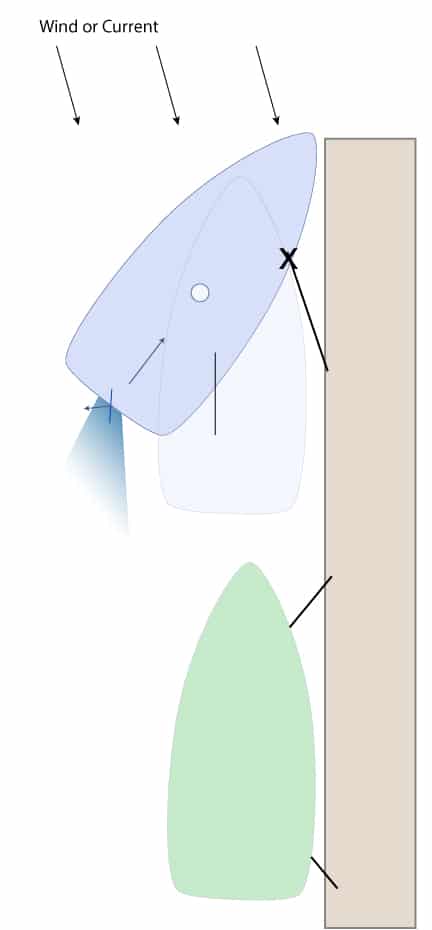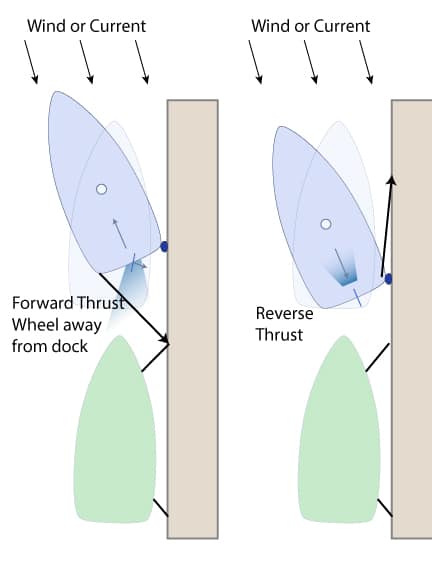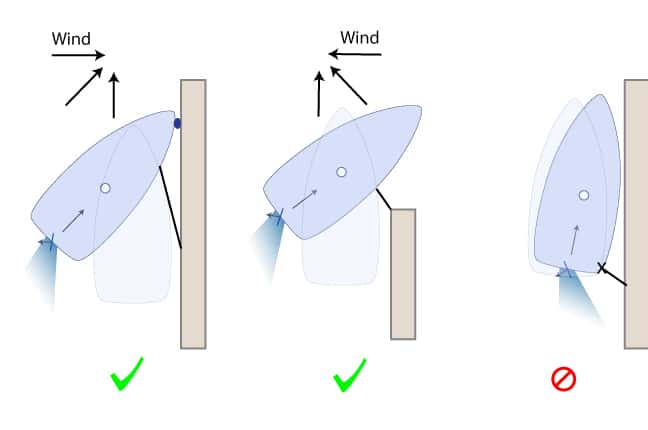Planning to use springlines when docking
Like a work of fine engineering, a spring maneuver requires a design. The key is to plan the maneuver by considering the wind, current, and other obstacles, then design the placement and directions of the forces and moments.
The decisions are:
- What to do with the rudder?
- Forward or reverse gear?
- Where to place the spring line: aft, amidships, or forward?
Take, for example, the following situation: You have a very tight marina and a strong wind that will prevent you from simply turning out of the slip. Which spring line would you use: 1, 2, or 3?
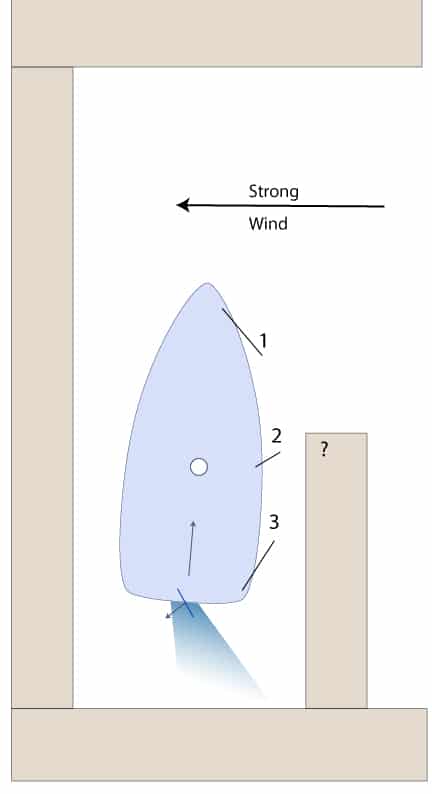
Using an amidships spring line is going to be your best solution. It will keep your boat tight in the turn around the end of the walkway finger and provide enough distance (X) between the rudder force and the spring line force to create an effective turning moment.
It is obvious even from looking at the image below that putting a spring line aft is not going to work because distance X is too small and no appreciable turning moment is created. Additionally, a forward spring line would not work so well because it would require the aft to swing into the port dock wall.
 Spring Line Exercise SL-6: Spring out with midships line
Spring Line Exercise SL-6: Spring out with midships line
Try the above springing out of the slip maneuver on a day with crosswind. Use the midships line.
 What You Learned
What You Learned
You need to practice the combination of spring line length, and power, and have someone monitor the spring line as well as release it at the correct time.
When designing a spring maneuver, you should look at how the wind or current will affect your boat. For example, you would definitely not do this maneuver below to leave the dock if the wind or current was high.
Despite good force and moment thoughts, the overall design is poor. The wind or current could blow you down into the boat parked behind you.
Instead, you would get out using either one of these maneuvers. In both cases notice the direction of forces and imagine the turning moment created.
 Spring Line Exercise SL-7: Spring out forward with wind from forward or from off the dock
Spring Line Exercise SL-7: Spring out forward with wind from forward or from off the dock
Try the above springing out of the slip maneuvers with the wind from forward. Use the small amount of leverage gained with the prop wash and aft spring line.
 What You Learned
What You Learned
Once the bow goes through the wind it becomes easy as the wind continues to push the bow out.
In the reverse thrust example, you’ll notice the rudder is not turned. This is because the rudder has little effect on redirecting the water flow when in reverse. Also, notice that in both cases a force component is toward the dock—and thus a fender between the dock and the boat is a good idea.
Here are two other effective springing off and out examples, and another that will not work.

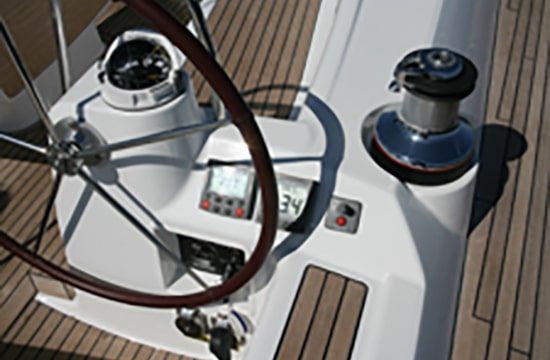
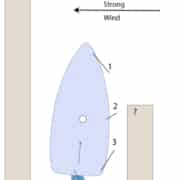
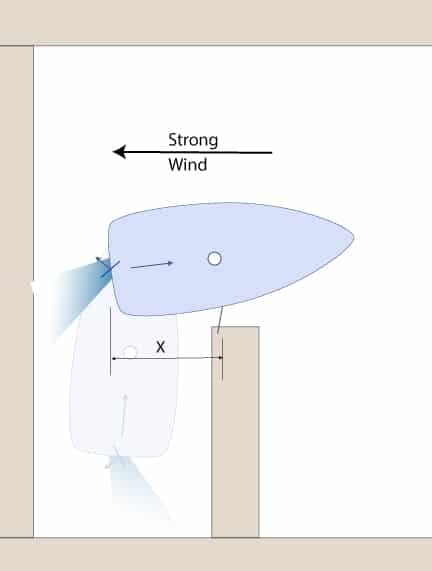
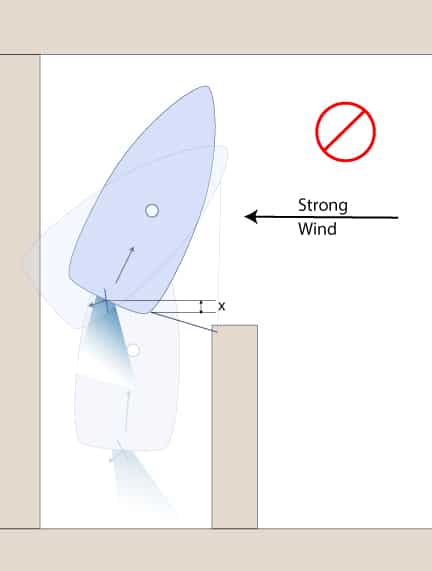
 Spring Line Exercise SL-6: Spring out with midships line
Spring Line Exercise SL-6: Spring out with midships line What You Learned
What You Learned